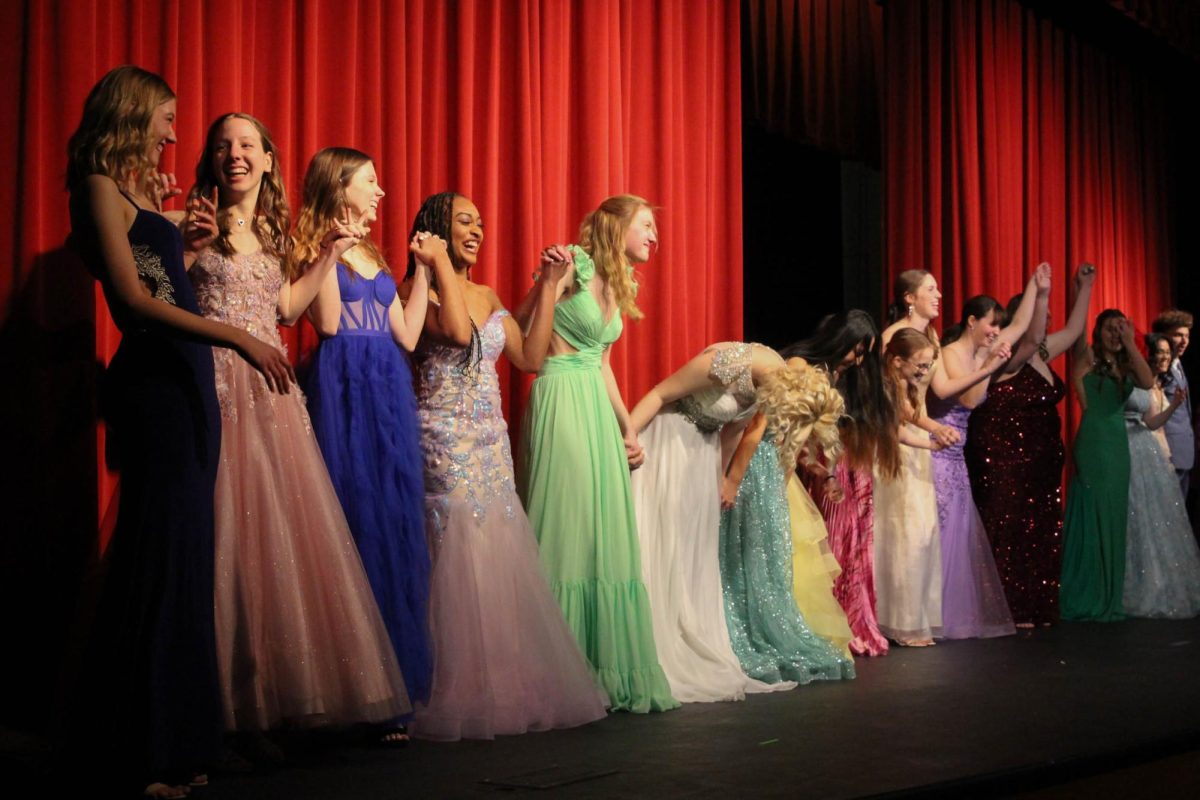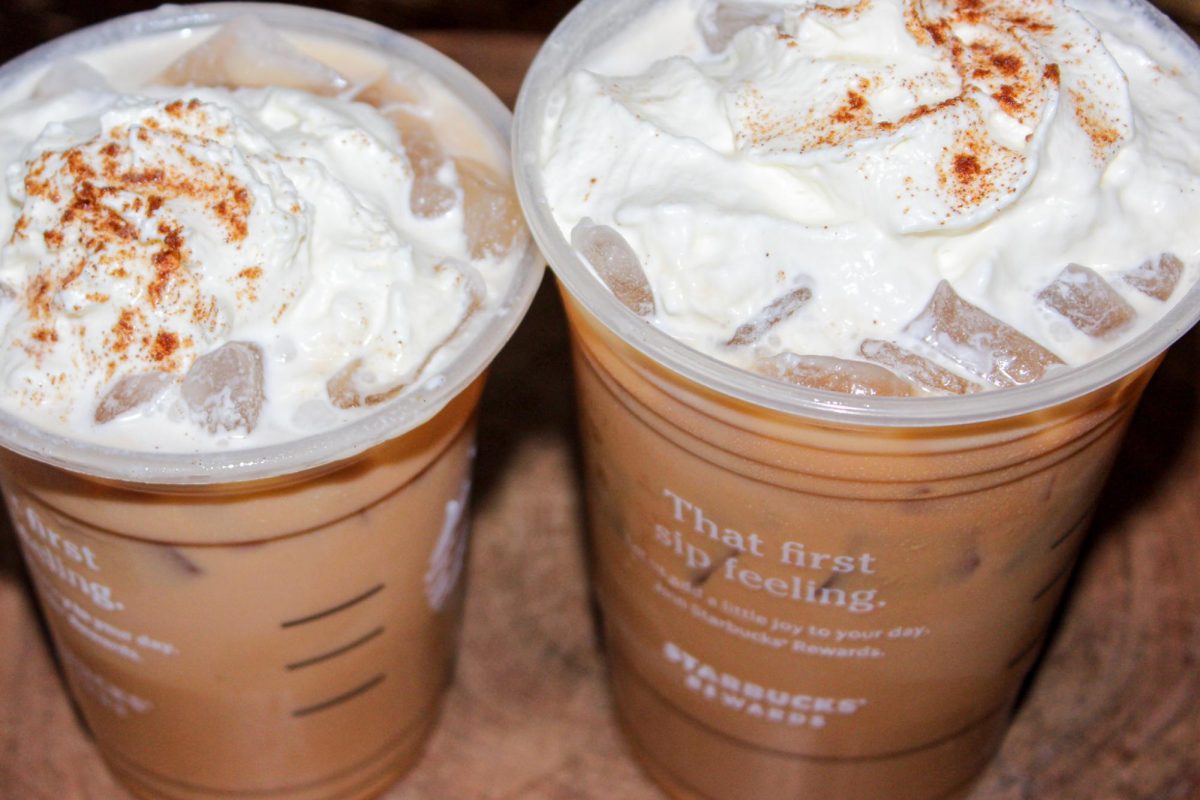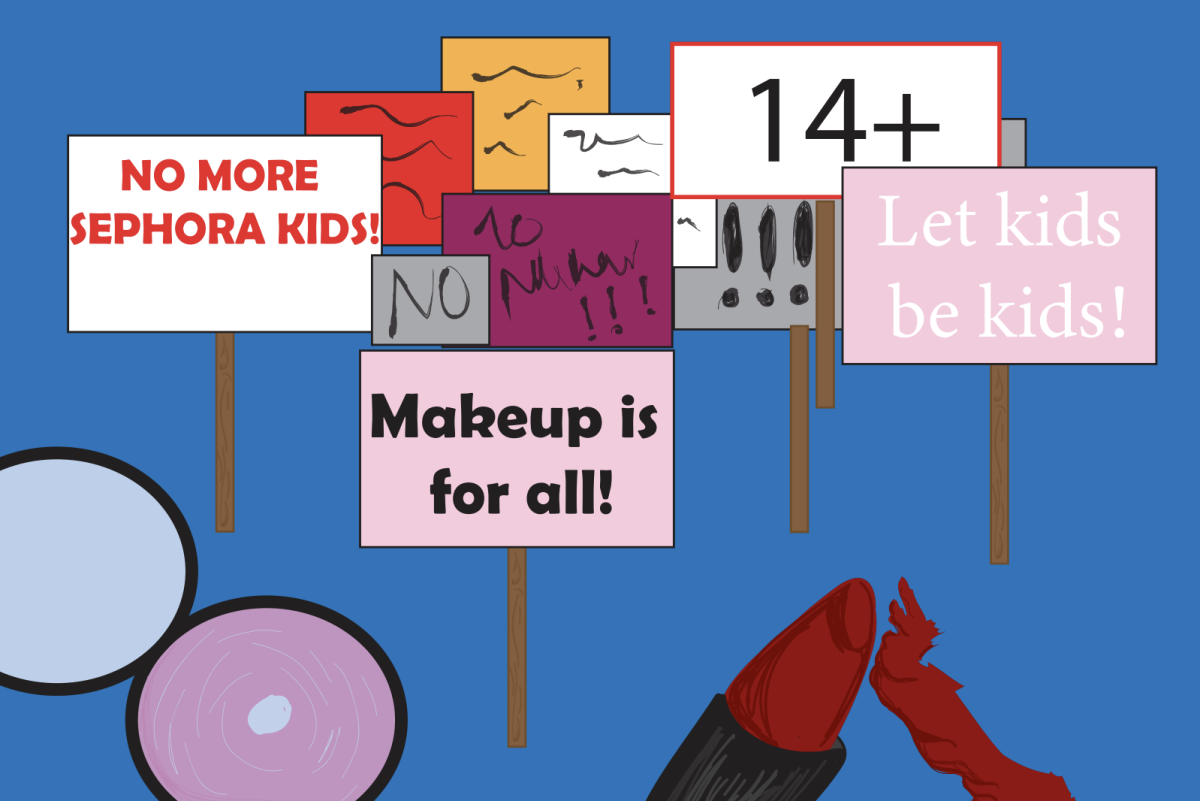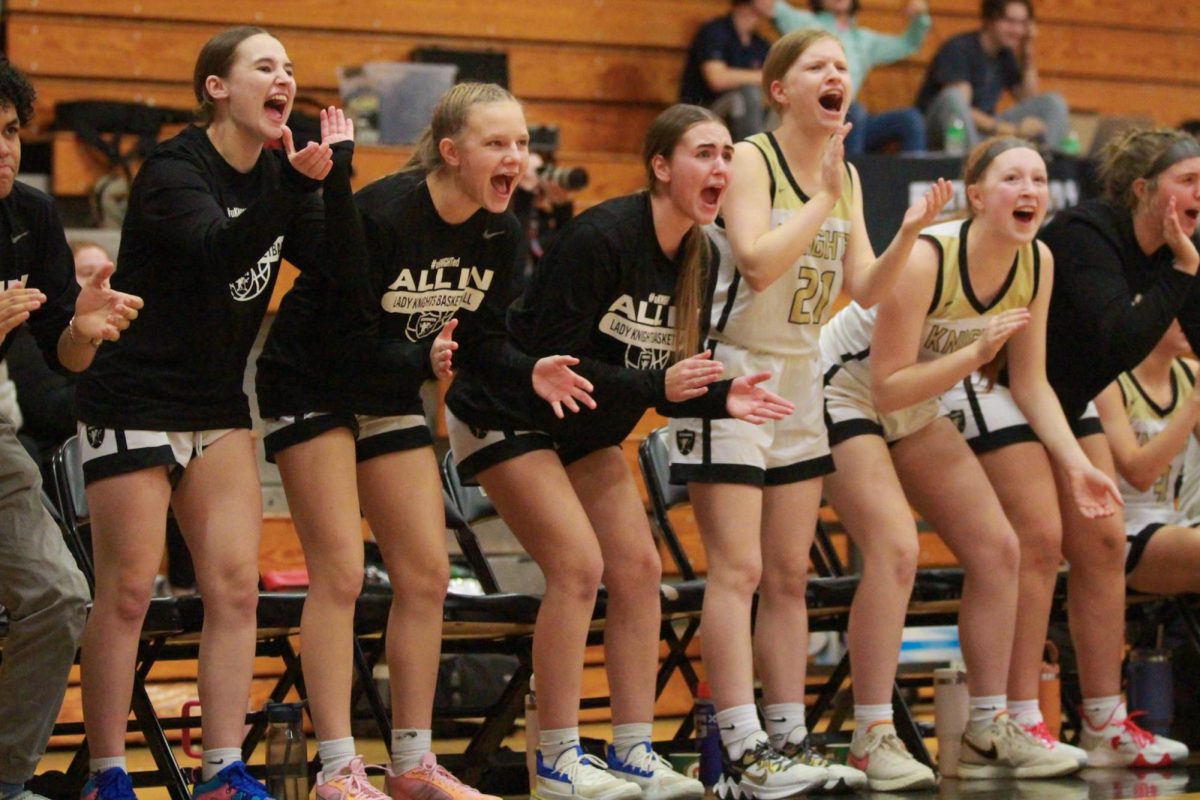Senior Rachel Rotter describes feminism as a movement striving for the balance of genders on the grounds of social, economic, and political standards. Senior Marissa Hume defines it as the equality of sexes in every way. Although there are many different definitions of what feminism is, the underlying principles are similar. On the grounds of physical standards, feminists believe that there is an imbalance of gender stereotypes between men and women and how they are supposed to look. Stereotypes of a woman’s style, makeup, and hair are issues of interest that many feminists are trying to tackle, including Marissa and Rachel.
Style
As hair in the workplace has restrictions in some cases, how a woman is expected to dress at work often differs from how a man should. In 1960, Lois Rabinowitz, a secretary who went to a courthouse to pay her boss’s speeding ticket, was ejected for wearing slacks and a blouse. In the 1980s, the power suit emerged. This suit included shoulder padding, “giving her a more aggressive and masculine silhouette,” as stated by Vogue. Today, these standards for work dress codes aren’t necessarily the case. Pants are allowed, and women do not have to wear a suit; yet, there are still some questions about how women should dress and what is or is not considered acceptable at work.
“Is your clothing too brightly colored? Do you leave the collar of your shirt out of the suit jacket or tucked in? Skirt or pants? You should wear heels, but not stilettos. You shouldn’t look frumpy, but don’t dare show cleavage,” The Nation, a magazine that covers many topics of feminism, says. Because of this unclear view of what is acceptable, women are often criticized for what they wear in the workplace.
Rachel is a firm believer in self expression through style and the idea that society should not choose any standard look that people should follow. According to Rachel, her style represents her choices, not what society’s standard expects.
“Stereotypes are huge [in style],” Rachel said. “You can’t wear anything without being thrown into a category.”
School dress code is also an area that feminists strive for equality in. In 2011, Arkansas passed a law that required schools to ban clothing that exposed underwear or female students’ breasts. Feminists believe that there is a double standard implying that a girl showing any part of her body is an educational distraction. A Pope High School student wrote a letter to ajc.com stating: “When you send a girl home because of a violation in dress code rules or her clothing is too immodest, you are essentially telling her that hiding her body is more important than her education. You are telling her that making sure boys have a distraction-free learning environment is the uppermost priority.”
The feminists’ fight for the equal treatment of women and men’s style is often seen as their most known principle. Feminists believe in the empowerment of oneself, not the fulfillment of society’s wants in one’s actions. They believe it is up to the person to decide what they want to wear, not the world’s decision.
“It’s being true to who I am and not waiting for someone to say, ‘you can wear that,’” Rachel said. “It’s just me telling myself what to do and what to wear, and that’s how it really should be.”
Makeup
In the late 1960s, many feminists argued that by wearing makeup and using other “beautifying tools”, women were only subjecting to the idea that they were useful for just their beauty, not their brain. Today, feminists still have the same general understanding, yet in a different form. They believe it is a choice whether one chooses to wear makeup and how much they do decide to wear. Rachel chooses to use and express herself through makeup, whereas Marissa decides not to.
“I’ve actually just never worn makeup, but people say that I’m ‘pretty enough’ to pull that off which I feel is unfair in the sense that guys can look like whatever and they can pull off that look,” Marissa said. “Why do I have to be pretty enough to pull it off? They [men] think that makeup is a natural look, and they don’t realize what natural is.”
Marissa’s natural look is just that: natural. She doesn’t wear makeup on a daily basis, but still believes in the equality of how a woman is viewed if she does or doesn’t wear makeup.
“For homecoming, I wore neon colors and sparkling glitter eyeliner, but I did it for myself so that I looked more festive for the occasion,” Marissa said. “It was like still a personal thing.”
On the contrary, Rachel expresses herself through makeup. She believes that makeup is an art, and anyone who wants to practice that art should be able to do so as they would like.
“I think a huge thing that really bothers me about makeup is that when a girl wears makeup, people think they’re trying to please another person,” Rachel said. “You hear guys say, ‘girls don’t need makeup’. We didn’t do it for you we did it for ourselves.”
The subject of makeup is not just a fight for a woman’s right to look how they want with or without makeup, but it is actually a fight for both genders to be equal in choosing to use makeup. In the days of the pharaohs, men could be seen with kohl-rimmed eyes in order to replicate the look of an almond-shaped eye, like the god, Horus. The Egyptians believed cosmetics had a magical power to defend their eyes of disease and fend off any evil spirits. Beginning in pre-Revolutionary times and progressing into the 20th century, the idea of men wearing makeup was somewhat looked down upon due to the thought that men who wore makeup were considered “drag”. In the 70s and as the age of rock arose, makeup for men became prevalent once again, and the term “guyliner” rose.
“The term guyliner: it’s like if guys wanna wear that, they had to make their own masculine version of a word that never had a specific gender,” Rachel said. “Society told us one day that we [girls] don’t look good without makeup, and we started wearing it. I feel like guys haven’t really worn it because society has yet to tell them that they don’t look good without it.”
According to a study that an English travel site held among 2,500 people, 10% of men use makeup before they go to a party. But events regarding the makeup for women only stereotype still exist. In June of 2014, the Washington Post did a story on Chase Culpepper, a boy who was told he could not get his driver’s license without removing his makeup because he “did not look the way a boy should” – the DMV’s justification according to WYFF News.
Feminism stands against this stereotype in that they believe a balance needs to be addressed: women and men should be able to wear as much or as little makeup as they please.
“Anyone should be able to wear makeup,” Rachel said. “Society says that makeup is for women. Feminism says that makeup is for everyone.”
Hair
In many cases, long hair is seen as the pinnacle for a woman’s femininity. Marissa deals with the opposition of this stereotype. About two months ago, Marissa chopped off her long locks, giving in to her desire to have a shorter cut.
“[With the new haircut] I cannot tell you how many times I have been called ‘sir’ or a man or different things like that,” Marissa said. “I used to have long hair, so I was considered feminine; now that I have this short one, I’m considered masculine.”
Marissa got the inspiration for this haircut almost two years ago, yet restrained herself from cutting it due to fear of society’s stereotyping. She waited until after getting a job to finalize the decision, in order to avoid being characterized by societal expectations.
“I had to wait until after I got a job because I didn’t want any kind of bias for having different hair,” Marissa said. “I don’t like having to worry about my hair while I’m at work when it’s a personal thing, and it doesn’t affect my performance.”
Women’s hairstyles have changed through different eras of history. In the Flapper movement of the 1920s, women were known for cutting their hair short, while in the 1960s and the rise of the hippie era, long hair was very popular among women. Certain defining trends in eras to fit the specific time period may have worked in the past, but there is no set style specific to today’s era. Recently, many women in the spotlight have been chopping off their hair, like Jennifer Lawrence, but others are known for always rocking their long locks, like Angelina Jolie. Feminists question why there is still a standard as to how a woman’s hair should look when there aren’t necessarily any guidelines women were told they have to serve..
“It’s finally gotten to the point where there’s almost no hairstyle that is specific to our decade,” Rachel said. “We assume peoples’ genders and sexualities all by the length of their hair. A girl has short hair and all of a sudden, ‘oh she’s really masculine,’ or a girl has long hair and ‘oh she’s super feminine.’”
Most feminists agree on the basis that social and gender significance is still attached to one’s hairstyle. Media’s standard of this ideal set of beauty often warps minds into thinking a woman’s hairstyle is not feminine if it is shorter, though many feel as though this perception is inaccurate and shouldn’t be a defining feature of femininity.
“It’s mostly just about doing what you want and not having to worry about judgment of others,” Marissa said.





![FHN Boys Varsity Volleyball Team Goes Against Troy [Photo Gallery]](https://FHNtoday.com/wp-content/uploads/2024/03/IMG_7545-300x200.jpg)
![FHN Students Watch the Solar Eclipse [Photo Gallery]](https://FHNtoday.com/wp-content/uploads/2024/04/4.8.24-solar-eclipse_-300x200.jpg)

![FHN JV Boys Volleyball Beats Troy [Photo Gallery]](https://FHNtoday.com/wp-content/uploads/2024/03/IMG_7408-300x200.jpg)



![Who is the Basketball GOAT- Michael Jordan or Lebron James? [OPINION]](https://FHNtoday.com/wp-content/uploads/2022/12/Untitled_Artwork_2-900x521.jpg)







![Instagram Reels Takes a Win Over TikTok After Years of Downgrades [Opinion]](https://FHNtoday.com/wp-content/uploads/2024/03/IMG_0758-e1711431070794.jpeg)